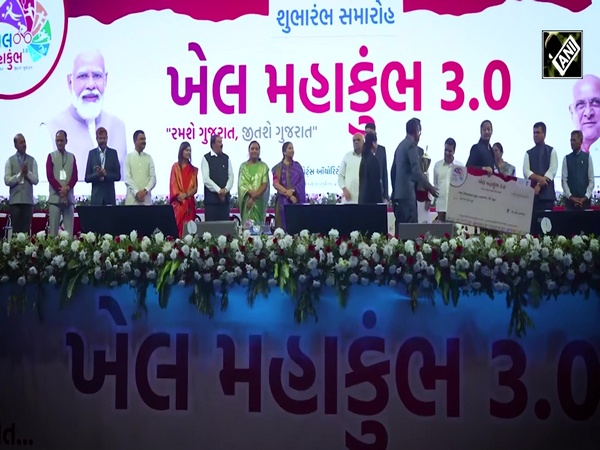Despite reductions in vehicular emissions in 2020, growth rates of global greenhouse gas emissions in atmosphere not slowed: Study
Nov 10, 2021

New Jersey [US], November 10 : The growth rates of global greenhouse gas emissions in the atmosphere during 2020 were not slowed compared to projected growth rates based on data from 2016-2019, despite reductions in vehicular emissions in 2020 amid the COVID-19 pandemic, revealed a new study.
The study published in Proceedings of the National Academy of Sciences of the United States of America (PNAS), combining observations and modelling of the effects of lockdowns associated with the COVID-19 pandemic on greenhouse gas emissions and air quality shows that despite reductions in vehicular emissions in 2020, the growth rates of global greenhouse gas emissions in the atmosphere during 2020 were not slowed compared to projected growth rates based on data from 2016-2019, due in part to the effects of carbon cycle feedbacks and background pollution levels; the results provide insight into the complex feedback between the Earth system and human activity and suggest that changes to individual behaviour alone are insufficient to halt greenhouse gas increases, according to the authors.
The COVID-19 led lockdowns altered human activity, providing a window into how changes in individual behaviour, enacted en masse, impact atmospheric composition.
The resulting reductions in anthropogenic activity represent an unprecedented event that yields a glimpse into a future where emissions to the atmosphere are reduced. Furthermore, the abrupt reduction in emissions during the lockdown periods led to clearly observable changes in atmospheric composition, which provide direct insight into feedbacks between the Earth system and human activity.
The study further said that there are several key takeaways from modelling and observational studies. First, despite dramatic declines in mobility and associated vehicular emissions, the atmospheric growth rates of greenhouse gases were not slowed, in part due to decreased ocean uptake of CO2 and a likely increase in CH4 lifetime from reduced NOx emissions. Second, the response of O3 to decreased NOx emissions showed significant spatial and temporal variability, due to differing chemical regimes around the world. Finally, the overall response of atmospheric composition to emissions changes is heavily modulated by factors including carbon-cycle feedbacks to CH4 and CO2, background pollutant levels, the timing and location of emissions changes, and climate feedbacks on air quality, such as wildfires and the ozone climate penalty.
The pandemic-led changes in human behaviour represent an unprecedented rapid change in anthropogenic emissions to the atmosphere. Despite large disruptions in transportation-emissions sectors, the global-scale change in the CO2 growth rate was less than interannual variability.
This is due to a combination of reduced ocean uptake of CO2, a recovery of CO2 emissions in the second half of 2020, and large interannual variability in land carbon fluxes. The lack of change in CO2 growth rates through 2020 indicates that expecting changes to individual behaviour to be sufficient to halt the increase of GHGs in the atmosphere is unrealistic, it added.
The COVID-19 experience allowed us to observe the response of Earth system processes to a rapid and large change in human activity, emissions, and consequent impacts.
"This is in contrast to previous analyses that have had to rely on sophisticated techniques to disentangle long-term anthropogenic signals that are often much smaller than the various uncertainties and natural variability in the system," the study shows.




















